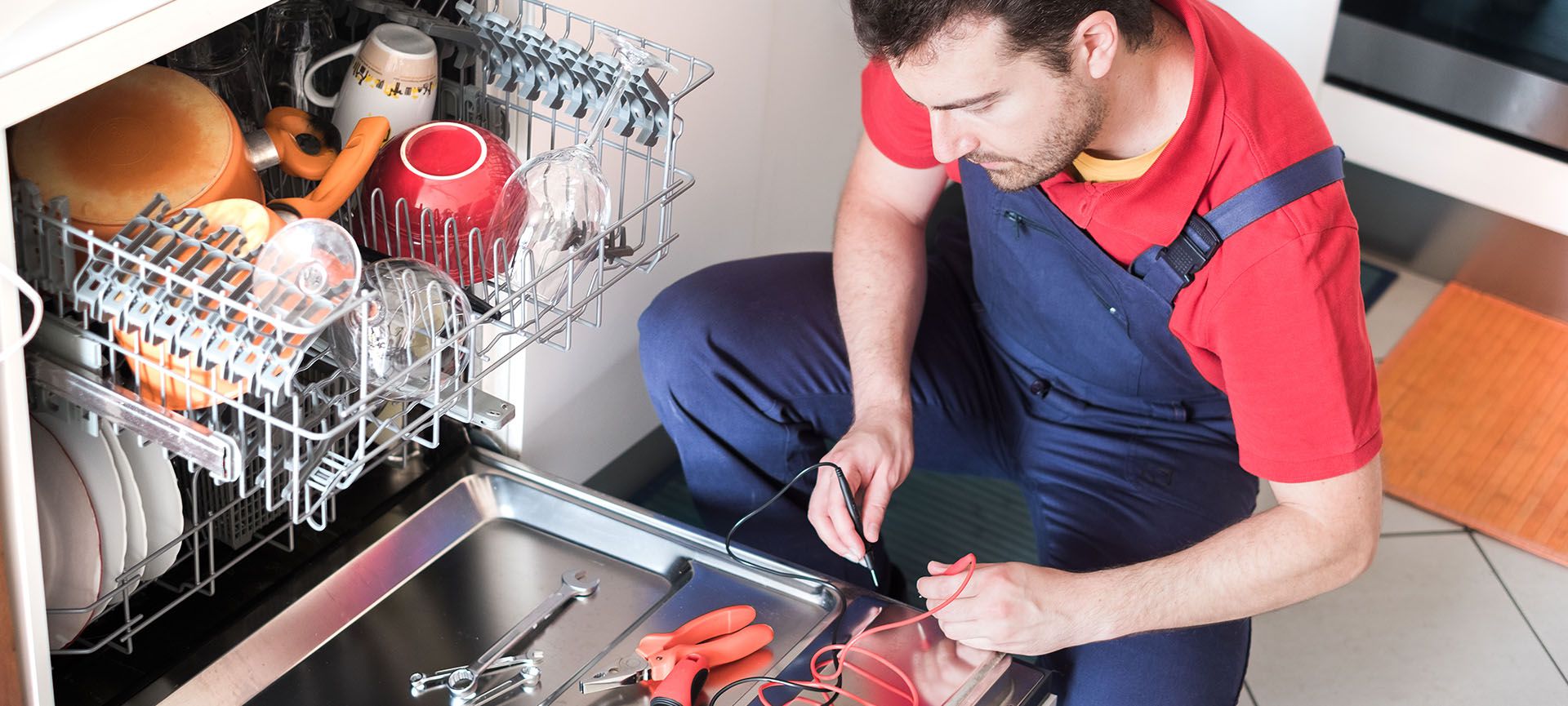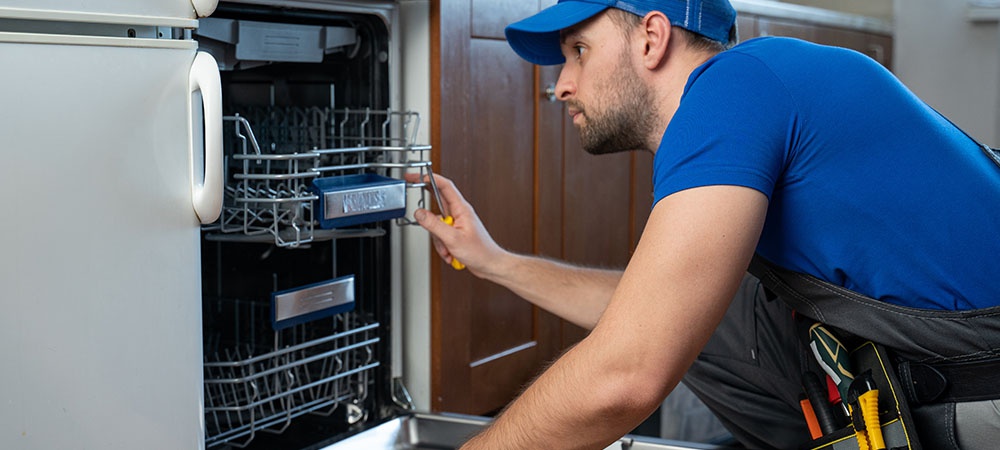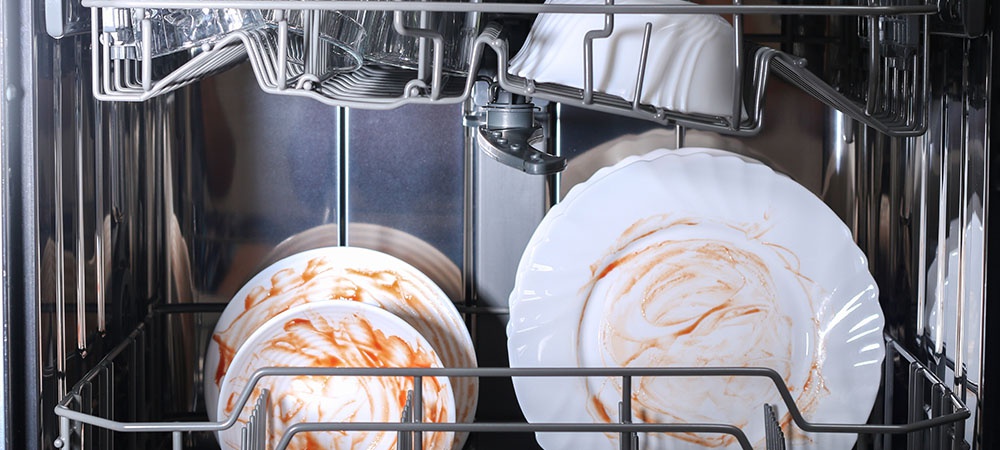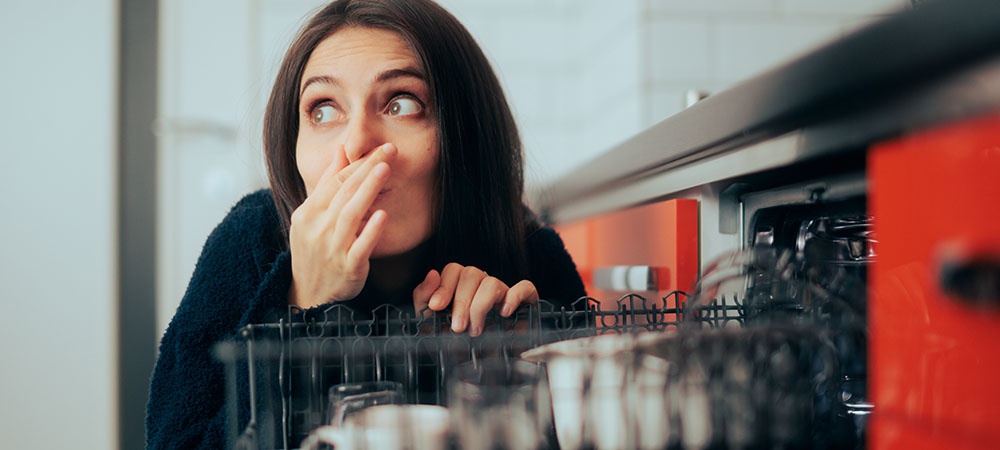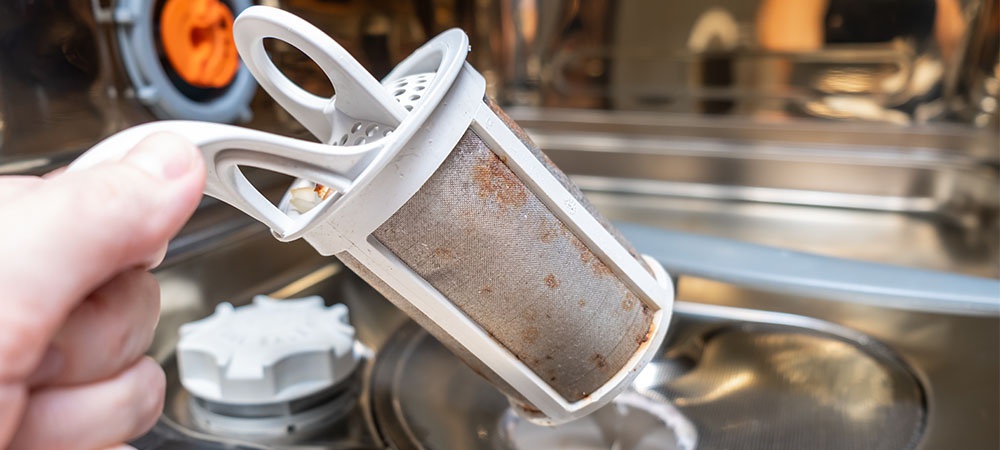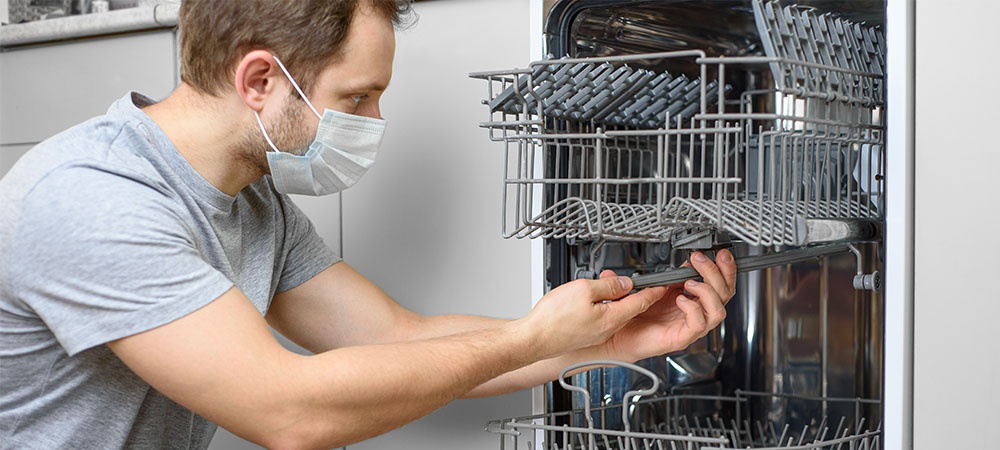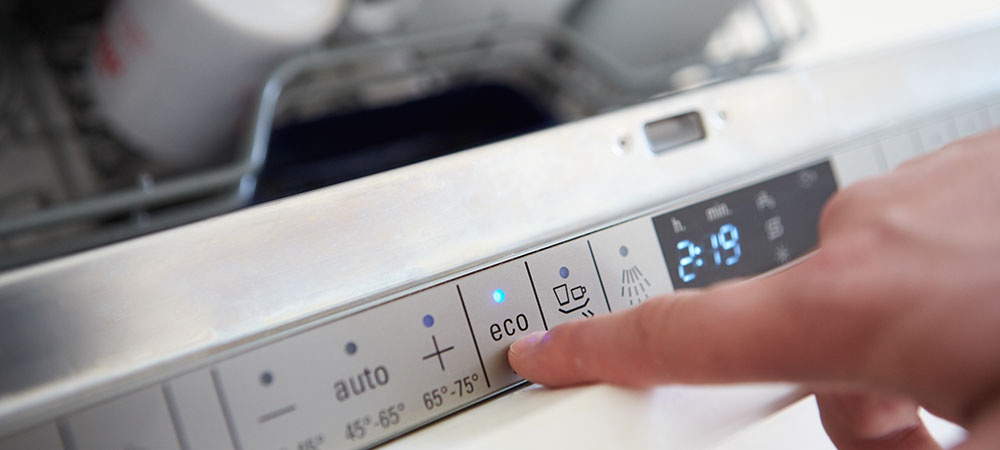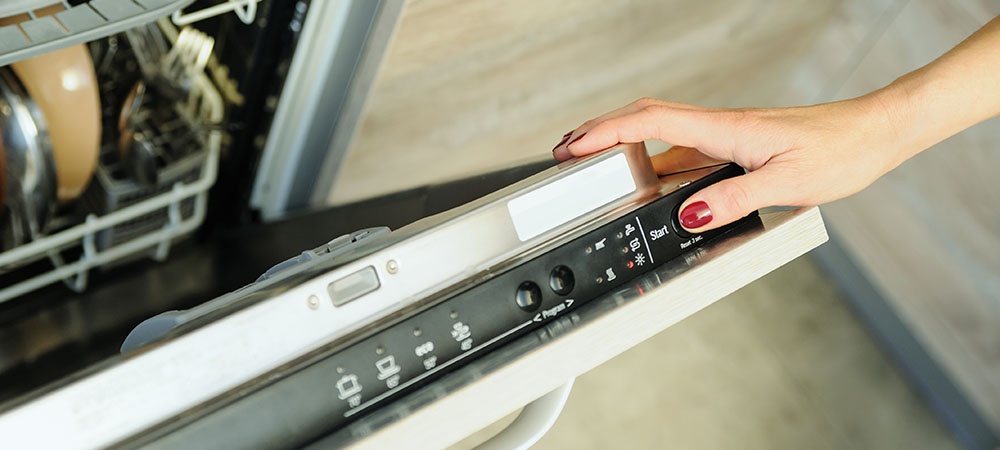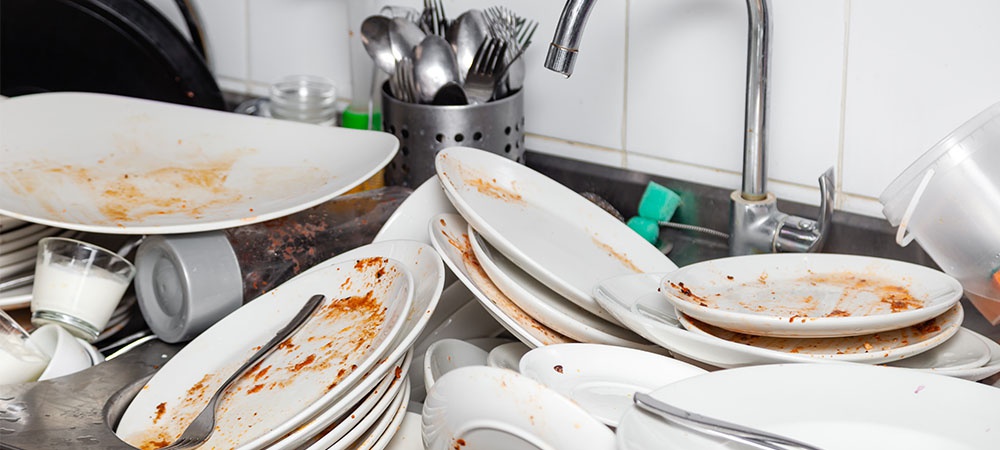Imagine hosting events like birthdays, Christmas hangouts, and housewarmings, and your dishwasher develops a fault. Now, you have to start manually doing the tremendous number of used dishes. Knowledge of common dishwasher problems will save you a lot of hassle.
With your dishwasher working smoothly, you’ll seldom worry about clean dishes. That’s why most homeowners look to get their dishwashers repaired as quickly as possible when it stops performing properly. Understanding typical dishwasher issues and their remedies can come in handy in these situations.
Therefore, we’ve provided a compilation of the most common problems with dishwashers and how to fix them. This knowledge will not only help you save time and cost of enlisting repair professionals. In addition, it’ll help you know how to keep your dishwasher in top shape.
Most Common Dishwasher Problems and Their Fixes
It isn’t just important for homeowners to learn about some of the most common dishwasher problems. It’s crucial you also know about diagnosing these dishwasher faults. These positions are valid even if your appliance has a warranty.
A dishwasher can be a bit complicated as a result of its makeup. A typical dishwasher has components including a door seal or latch, drain impeller, lower and upper racks, pump, main tub, soap dispenser, blades, thermostat, and thermal fuse. And these are just a few of the many elements that build up a dishwasher.
The sheer number of elements means dishwasher repair may sometimes be out of your capacity as a homeowner. And this may require you to call the experts when you have a problem.
However, it’s always good to have substantial information regarding solutions to dishwasher problems.
Below is a comprehensive list of the most common dishwasher problems and their fixes.
1. The Dishwasher is Leaking
This fault is one of the most common dishwasher problems. And if your dishwasher is in this shoe, there’s a DIY repair for it.
Firstly, examine the door and door gasket. Check for any significant damage, debris, or cracks that may prevent a complete seal. The gasket may need replacement if it has major cracks. Afterwards, use a disinfectant to clean the door gasket.
The float switch may also be a problem. This component is what indicates water sufficiency in the dishwasher.
It may be an issue for your unit if the float switch is stuck in “down.” Particularly, this issue will result in the machine overflowing and leaking.
Fortunately, you can quickly resolve float switch issues. If you notice the switch is hooked, firstly clean the area. Then, remove any obstructions such as plastics or strings from the space around the switch.
2. It’s Not Drying The Dishes
Your dishes not getting dry upon exiting the dishwasher is one of the most common dishwasher problems.
It’s advisable to use liquid rinse aids alongside dishwashers. The drying process will benefit from this. It’ll also prevent the formation of water droplets, therefore reducing the possibility of stains or streaks appearing on the dishes as they dry.
It’s still good to add liquid rinse aid to the dispenser, even if the tablet or detergent already has it. The dispenser’s functionality tilts to dispersing this at the right time for optimum outcomes.
3. The Dishes Aren’t Cleaning Well Enough
A problem exists if the dishes come out of the dishwasher caked with residue or unclean.
To inspect your dishwasher, do the following:
- Check if the machine is overloaded
- Check if there is an object in the way
- Examine if the plates are coated in food when they are placed in the machine
After you’ve done all of the above, ensure to follow the manufacturer’s instructions for troubleshooting the appliance.
Many things can cause this malfunction in your dishwasher. They include debris or clogs in the door gasket or strain screen. Therefore, using your hand, check whether the spray arms are moving freely.
There’s a problem if there are water spots on the dishes after washing. It means the water has likely stayed on them for an excessive time. Luckily, you can solve this problem using a rinse aid.
Sometimes, hard water is to blame for residual issues. Use a water softener or a detergent that softens the water to solve this problem.
4. Dishwasher is Smelly
One of the most common dishwasher problems homeowners dread is foul smells. The most common cause of an unpleasant odour in the dishwasher is damp, stale food.
Make sure there are no traces of food in the dishwasher. And clean the screen at the bottom of the appliance. Chemical odours can also result from a plastic plate or Tupperware container melting to the heating component in the unit’s bottom.
The best way to prevent a smelly dishwasher is by remaining deliberate about keeping your dishwasher fresh and free of unpleasant odours. Always load the appliance carefully and remove any food particles before putting it in.
5. It Makes a Disturbing Noise
A noisy dishwasher is another common dishwasher problem. Weird noise coming from the dishwasher is a red flag you shouldn’t ignore.
Ensure all the internal components are functioning properly. Additionally, you may hear strange noises if the wash arm is twisted too far.
Seals and bearing rings that need replacement may also generate a rattling sound. And it’s a common issue with dishwashers, too. Therefore, check for loose parts or components in your appliance.
6. Unable to Drain Dishwasher
Another common dishwasher problem you may encounter is the appliance not draining. Thankfully, this dishwasher repair guide has a fix for the malfunction too.
After installing a new garbage disposal, the knockout plug is frequently left out of place. So try to get it back into place if yours is easily mobile.
On the other hand, some dishwashers are more complicated. The drain pipe on some dishwashers is attached to this garbage disposal. This connection implies detaching the knockout plug, allowing the dishwasher to drain.
You may need to call in the experts to repair your dishwasher in the above instance. This resort is because they need to remove the plug and verify the hose is properly and securely attached. And this process requires expertise.
7. Dishwasher not Starting
One of the common dishwasher problems you may face as a homeowner is your appliance not starting. But here’s how to fix your faulty dishwasher in this situation.
First, check to confirm the outlet is working properly and no fuse has overheated. It’s also a good idea to restart the dishwasher if it’s not working properly.
The door may be the problem in some cases. Your dishwasher won’t ignite if the latch is not fully closed.
Related Article: Dishwasher Doesn’t Start: Top 4 Causes and How to Fix
8. No Soap Dispensation
When using powder and pod detergents, they must be placed in a sealed container before the washing cycle. Sometimes, there isn’t enough water to dissolve the detergent and dispense it properly. Therefore, using less detergent or switching to a liquid detergent can fix this soap dispensation problem.
The above may not work if the container is cloggy or too damp. This drawback is because the solid moisture stops the dishwasher from opening when activated. Unfortunately, this dishwasher malfunction is a typical occurrence.
9. The Dishwasher Takes Too Long to Rinse
Here’s another common dishwasher problem. So, how do you diagnose and fix a common dishwasher fault like this one?
Excessively extended cycle periods may be the result of various factors. One possibility is the dishwasher won’t start if the hot water in the sink isn’t on. Run hot water via the closest tap to the dishwasher for a few minutes to flush out any remaining cold water.
Choosing the proper cycle is also critical. Some are going to last longer than the rest. Dry heat, for example, will lengthen the overall cycle duration if more heat or sanitization is selected.
Another concern is the temperature of the water in the water heater. You want it to be at least 120 °F. Therefore, take a second look at the thermostat and set the temperature appropriately.
10. Lights Flashing Incessantly
If the dishwasher’s lights start flashing, there’s a problem. Discovering and diagnosing the issues of this washing appliance has become easier nowadays. This notion stands because modern dishwashers come with several types of warning signs and signals.
The user’s manual often contains different reasons your dishwasher lights may flash. In the manual, you may even learn about more common dishwasher problems.
These problems are usually the ones peculiar to that brand of dishwasher. Additionally, you’ll find how to remedy them. The above know-how will help you avoid many problems in the future.
11. Buttons on the Unit Not Working
Here, the buttons may be malfunctioning due to a mechanical or electrical problem. If you have any doubts about diagnosing this issue, it’s better to call in the experts.
Sometimes, your dishwasher door may not latch properly. And this can be a problem because buttons on the dishwasher unit won’t work if the door isn’t locked. Therefore, check to determine if this is the source of the issue.
Don’t stop reading yet! We still have one common dishwasher problem to show you. And we’re not leaving out its fix too.
12. Dishes Stained with Food Particles
In some cases, filters attached to some dishwasher models aren’t removable. This possibility is why you need to read the owner’s manual thoroughly. In addition, the unit’s cleaning rate can be adversely affected if the filters are clogged or unclean.
A user’s guidebook will tell you how to clean a dishwasher’s filters. In cleaning, you’ll need to take note of:
- If filters have solid parts on the upper sections of their assemblies
- If food particles remain on the dishes
- If the dishes feel dirty or a specific period has elapsed.
Related Article: What Is the Cost of Repairing a Dishwasher in Toronto?
Summary
Being well-informed about the most common dishwasher problems is crucial. The knowledge will further help you in diagnosing dishwasher faults. And it’ll ensure the right actions follow for repair.
However, sometimes your dishwasher may be too complicated for you. For example, the dishwasher components sometimes make a fault too intricate for DIY repairs. Therefore, you’ll need professionals with comprehensive repair knowledge.
Here, it would be best if you understood not all repair services are the same. Therefore, you need a repair service that specializes in your dishwasher model. Fortunately, you don’t have to look far because we offer multi-brand dishwasher repair services at Prime Appliance Repairs.
The best technicians carry out our same-day dishwasher repair services. And we have a fantastic work ethic. Contact us today!





